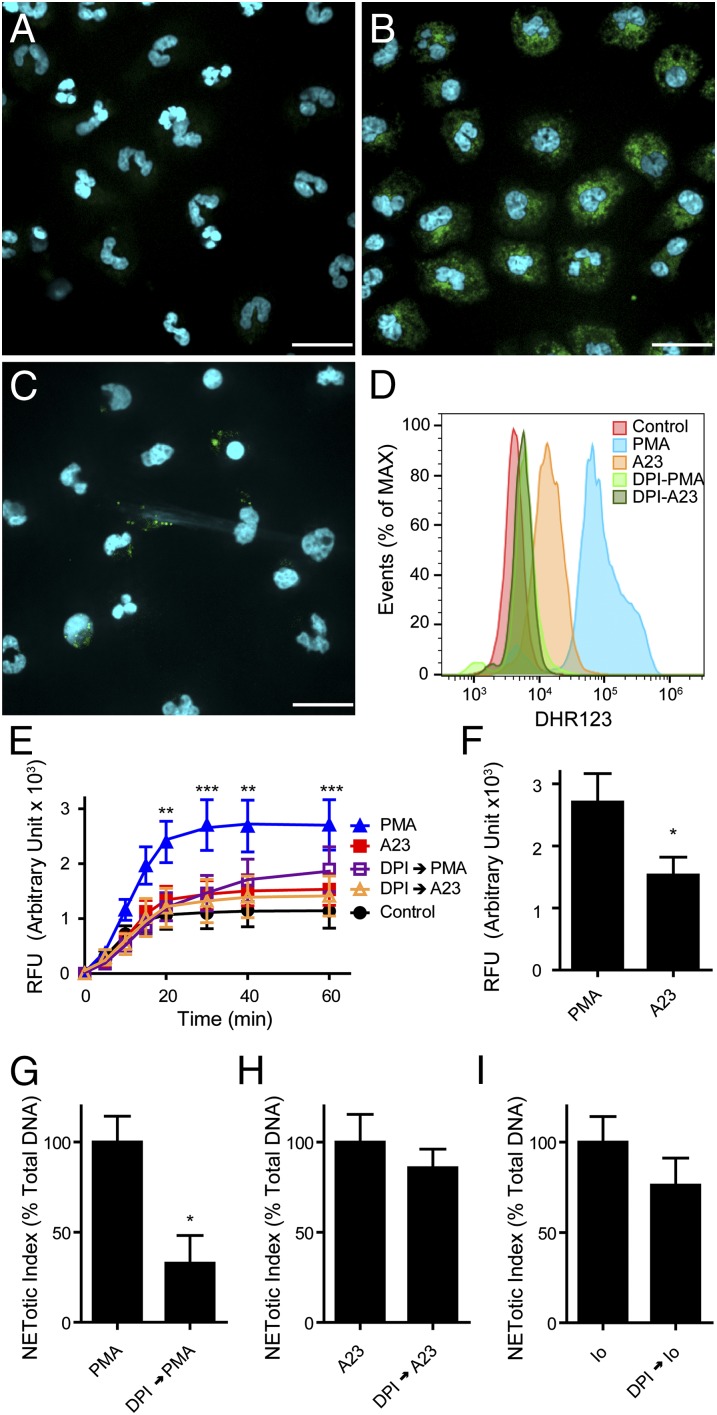Fig. 2.
Calcium ionophore-mediated NETosis is NOX2 independent. (A–D) Human neutrophils were loaded with cytosolic ROS indicator DHR123 and activated with PMA or A23187. Live cell fluorescence image analysis of DHR123 loaded cells treated with control buffer (A), PMA (B), or A23187 (C). The presence of cytosolic ROS is indicated by the green fluorescence, and the cells were counterstained with Hoechst 33342 live cell DNA stain (blue) (n = 4). (Scale bar, 20 µm.) (D) Representative flow cytometric analysis of cytosolic ROS production in neutrophils loaded with DHR123 and activated with either PMA or A23187, in the presence or absence of DPI (n = 3). (E and F) DHR123-based ROS detection plate reader assays show that PMA induces a significantly greater cytosolic ROS production compared with A23187. (G–I) Neutrophils were activated by PMA, A23187, or ionomycin in the presence or absence of DPI (20 μM) and NET release was measured using a plate reader assay. The results are expressed as percentage of reduction in the presence of DPI compared with the activating agonist alone. DPI significantly reduces PMA-mediated NETosis (G), whereas it fails to inhibit A23187 (H)- and ionomycin (I)-mediated NETosis (n = 3). DPI → PMA, preincubation with DPI and activated with PMA; A23, A23187; DPI → A23, preincubation with DPI and activated with A23187; Io, ionomycin; DPI → Io, preincubation with DPI and activated with ionomycin. *P < 0.05 (E, two-way ANOVA; F–I, Student’s t test).

